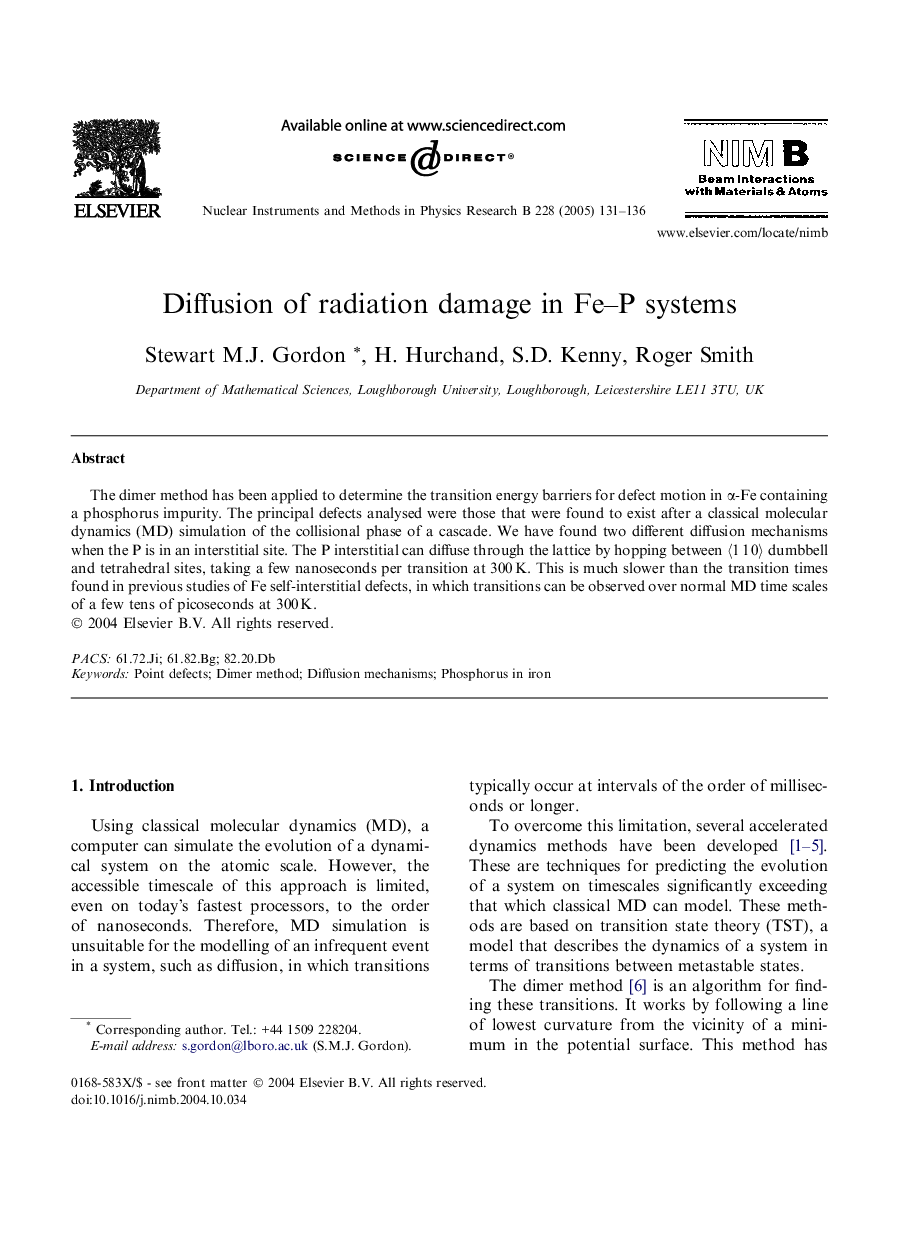| Article ID | Journal | Published Year | Pages | File Type |
|---|---|---|---|---|
| 9818394 | Nuclear Instruments and Methods in Physics Research Section B: Beam Interactions with Materials and Atoms | 2005 | 6 Pages |
Abstract
The dimer method has been applied to determine the transition energy barriers for defect motion in α-Fe containing a phosphorus impurity. The principal defects analysed were those that were found to exist after a classical molecular dynamics (MD) simulation of the collisional phase of a cascade. We have found two different diffusion mechanisms when the P is in an interstitial site. The P interstitial can diffuse through the lattice by hopping between ã1 1 0ã dumbbell and tetrahedral sites, taking a few nanoseconds per transition at 300 K. This is much slower than the transition times found in previous studies of Fe self-interstitial defects, in which transitions can be observed over normal MD time scales of a few tens of picoseconds at 300 K.
Related Topics
Physical Sciences and Engineering
Materials Science
Surfaces, Coatings and Films
Authors
Stewart M.J. Gordon, H. Hurchand, S.D. Kenny, Roger Smith,
